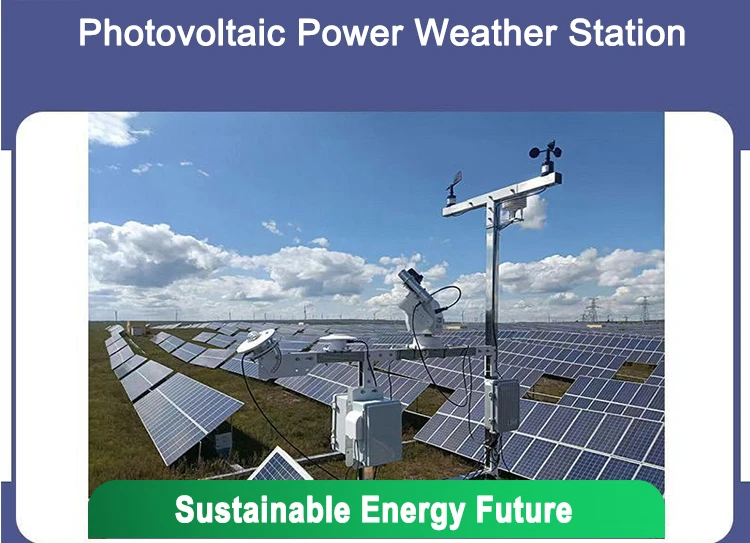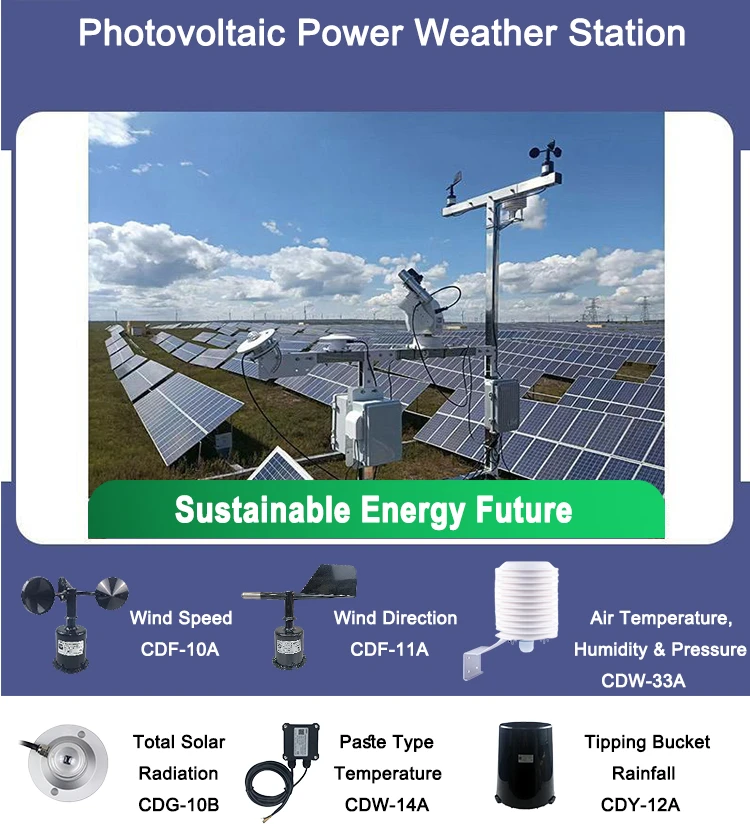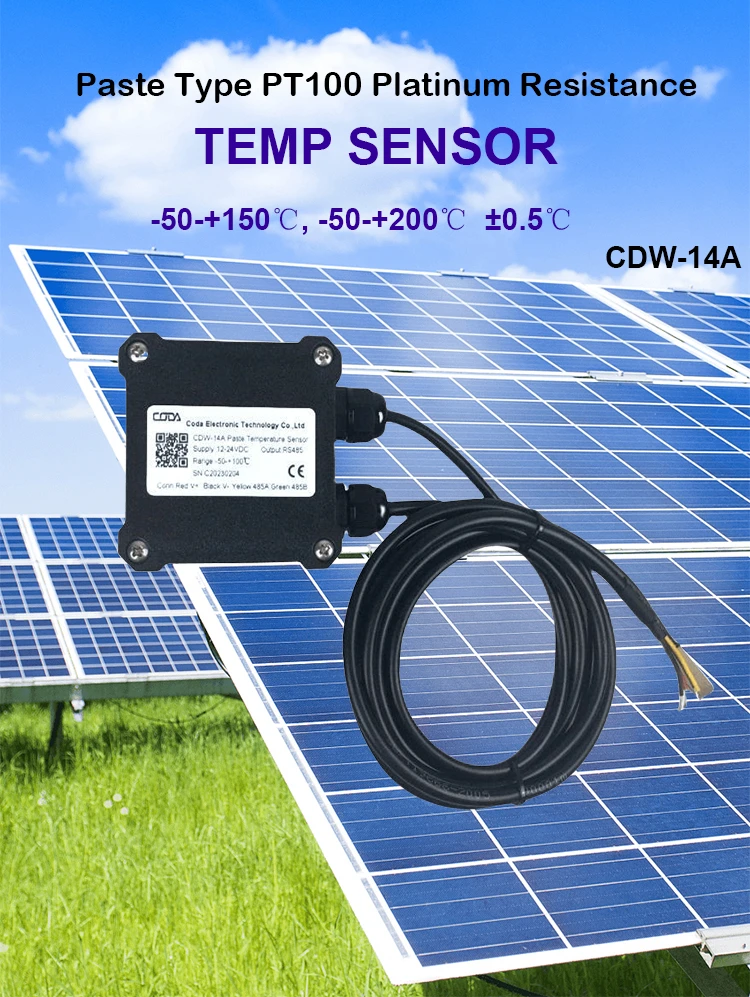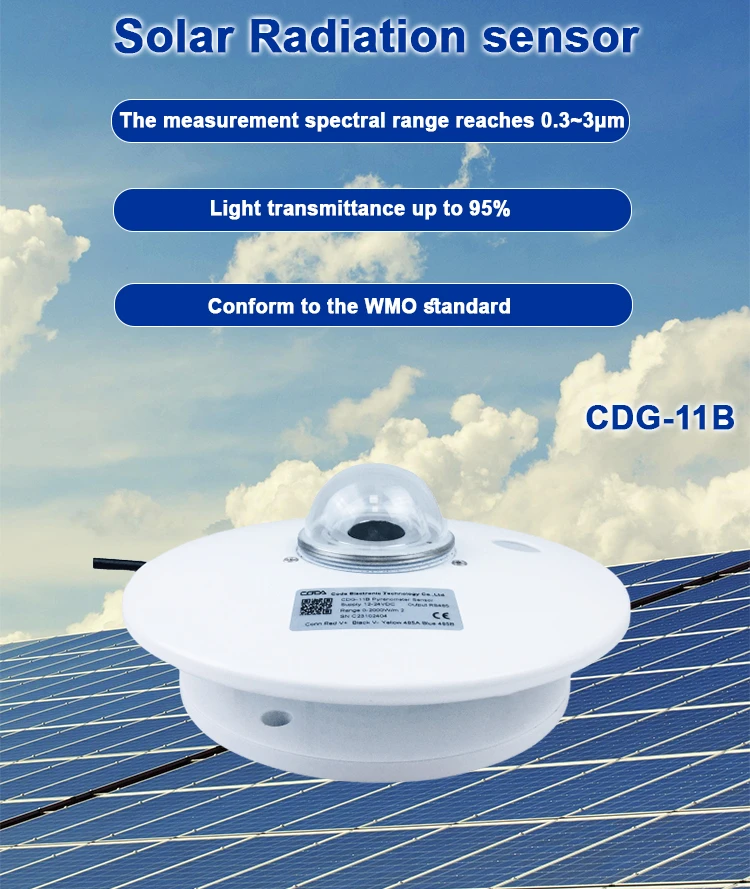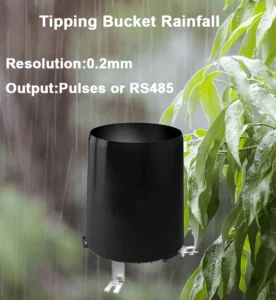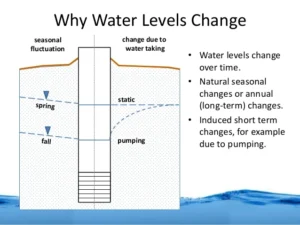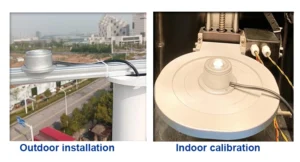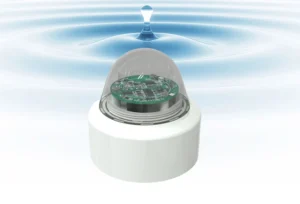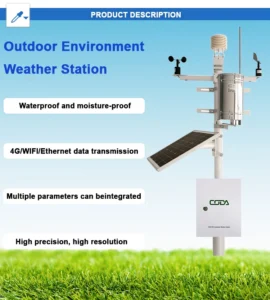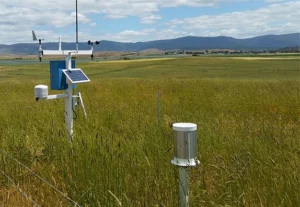What Are solar sensors Needed for Solar Panel Systems?
Solar panel systems are now a key part of the world’s shift to renewable energy. They change sunlight into electricity, providing a clean and sustainable power source.
To ensure good performance, reliability, and safety, engineers use various sensors in solar panel systems. This article will talk about the main sensors in these systems. It will explain what they do and how they help make these energy-generating setups work better.
Photovoltaic Current and Voltage Sensors
Function
PV current and voltage sensors are essential for solar panel systems. Their primary role is to measure the electrical output of the solar panels. These sensors measure the current and voltage from the PV modules.
They give real-time data on the system’s power production. This information is important for tracking how each panel and the whole solar array are performing. For example, if the voltage output of a panel drops a lot, it may show a problem. This could be due to shading, a broken cell, or a connection issue.
Working Principle
Current sensors often use the Hall-effect principle. A Hall-effect sensor detects the magnetic field from the electrical current in a conductor. The strength of the magnetic field depends on the current size.
This lets the sensor measure it accurately. Voltage sensors, on the other hand, typically work by using a voltage divider circuit. This circuit reduces the high voltage from the solar panels. It lowers the voltage.
This makes it safe for the monitoring system’s analog-to-digital converter (ADC) to measure. The ADC changes the analog voltage signal into a digital value. This value can be processed and analyzed by a system.
Contribution to System Efficiency
Operators can check how well the solar panels work by watching the current and voltage. They can find the power output with the formula P = VI. In this formula, P means power, V is voltage, and I is current.
They can compare this output to what we expect. This expected performance depends on sunlight and panel details. If there are problems, we can respond quickly.
You may need to clean the panels to remove objects that cause shading. You might also need to fix broken parts. This helps get the most energy from the solar panels. It also makes sure the system works at its best efficiency.
Temperature Sensors
Function
Temperature sensors are important for solar panel systems. Temperature has a big impact on how well PV modules perform. These sensors measure the temperature of solar panels. Factors like outside temperature, sunlight strength, and heat release can change the temperature.
High temperatures can lower how well solar panels work. This leads to less voltage and less power generation. Temperature sensors help monitor changes and alert operators when the temperature gets too high.
Types and Working Principles
There are different types of temperature sensors used in solar panel systems. One common type is the thermocouple. It is made by joining two different metals. A temperature difference between the two ends creates a small voltage.
This voltage relates to the temperature difference, which helps measure temperature. Another type is the resistance temperature detector (RTD). RTDs work on the principle that the electrical resistance of a metal changes with temperature.
Measuring the resistance of the RTD allows for accurate determination of the temperature. Thermistors are devices made from semiconductors. They change their resistance when the temperature changes. People often use them to sense temperature in solar panel systems because they are very sensitive.
Contribution to System Efficiency
With accurate temperature data from the sensors, operators can use algorithms to adjust for temperature changes. These algorithms adjust the power output calculations. They take into account how temperature affects panel performance.
If the temperature sensors find that the panels are too hot, we can cool them down. We can change the ventilation around the panels or add cooling systems. This keeps the panels at a good temperature. It helps them work better and last longer.
Irradiance Sensors
Function
Irradiance sensors, or pyranometers, measure how much sunlight hits the solar panels. This data is important for checking how well the solar panel system works. Operators can see how much sunlight is available.
They can compare this to the actual power output of the panels. This shows if the system is working well. Irradiance sensors are key for predicting how much energy a solar panel system will make. This aids in grid integration and energy management.
Working Principle
Most irradiance sensors are based on the photovoltaic effect or the thermoelectric effect. Photovoltaic – based pyranometers consist of a silicon solar cell that generates an electrical current proportional to the incident solar radiation.
The system measures current and changes it into an irradiance value. Thermoelectric pyranometers use a thermopile, which is a group of thermocouples. The thermopile absorbs solar radiation sensor.
This creates a temperature difference that produces an electrical voltage. This voltage is linked to solar irradiance and helps find the irradiance level.
Contribution to System Efficiency
Accurate measurements of sunlight help us see how well the solar panel system works. Operators can find the performance ratio (PR) of the system. This ratio compares the actual energy produced to the expected energy output.
The measured light affects the expected output. A low PR shows there are problems in the system. These problems can include dirt on the panels, wrong panel direction, or broken parts.
Researchers use sunlight data and weather forecasts to predict future energy production. This helps manage energy better and balance the grid.
String and Inverter Sensors
Function
In a solar panel system, several solar panels connect in series to form a string. These strings connect to an inverter. The inverter changes the direct current (DC) from the panels into alternating current (AC). People use this AC in the electrical grid or in buildings.
Technicians use string sensors to check the electrical details of each string. They look at current, voltage, and resistance. Inverter sensors measure the inverter’s input and output.
They check AC voltage, current, frequency, and power factor. These sensors are important for finding faults in the strings and the inverter. They help keep the whole system safe and running well.
Working Principle
Sensors are usually placed at the end of each string. They work like PV current and voltage sensors. These sensors measure electrical parameters.
They send this data to a central system. The system can analyze the data for any problems.
The manufacturer puts inverter sensors inside the inverter. They use different ways to measure electricity. These methods include current transformers and voltage dividers. This helps them measure the input and output electrical values correctly.
The inverter has built-in microcontrollers. These microcontrollers process data and can find faults. They can detect issues like overvoltage, undervoltage, or unusual current levels.
Contribution to System Efficiency
These sensors watch the strings and the inverter all the time. They can quickly find problems like a broken panel, a bad connection, or an inverter issue.
Finding problems early helps with fast repairs. This cuts downtime and keeps the system working well.
The data from these sensors can help improve how the inverter works. This includes changing the power conversion efficiency based on input and output.
Conclusion
Solar panel systems use different sensors to work well and safely. These include sensors for current, voltage, temperature, sunlight, and position. Each type of sensor plays an important role.
They help check and improve how these systems work. As the need for renewable energy increases, these sensors are very important. They help get the most energy from solar panels. They also make sure that solar systems work well with the electrical grid.
Future improvements in sensor technology will likely make solar panel systems better. This will help them become a more effective and reliable source of clean energy.
